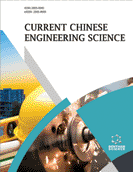Abstract
Environmental issues, due to the various gases that are harmful to fossil
fuels, can cause disease and sickness worldwide. Renewable energy sources (RESs) are
a crucial solution for decreasing reliance on fossil fuels. This is because they offer
several advantages, such as significant cost reductions in operations, minimal
depreciation over time, and the ability to provide electric power for various
applications. As a result, they are highly desirable for use in the power sector. This
kind of trouble becomes excessively challenging by developing the extent of the
electric power market step by step. The authors developed a new optimization
technique by combining chaotic maps with various nature-inspired optimization
algorithms, such as the Harris hawks optimizer, sine cosine algorithm, and slime mold
algorithm. This approach allowed them to improve the performance of these
bioinspired optimization methods. The researchers evaluated an improved technique
called hCHHO-SCA and hCSMA-SCA for solving the PBUCP considering renewable
energy sources. They tested the techniques on both a 10-generating-unit system and a
100-generating-unit system. The authors were able to calculate the profit generated
from each system as a result of applying the improved techniques. The adequacy of the
analyzer is confirmed for a few benchmark issues that have been observed. The
recommended optimizer is helpful in obtaining a solution to problems related to
discrete and continuous optimization, including nonlinear types of optimization.
Keywords: Chaotic maps, Harris hawks Optimizer, Metaheuristics, Profit-based unit commitment Problem, Renewable energy sources, Slime mould algorithm, Sine cosine algorithm, Unit commitment problem.






















